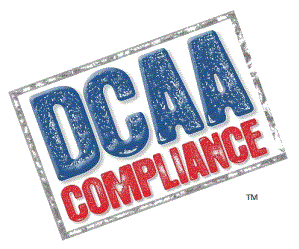I can take this one of two ways:
- DCAA now agrees that adequacy is defined by the regulation and should not be subject to individual auditor whims.
- Doing the right thing means doing less work upfront as they probably will not audit anyway.
The following is from the New ICE Manual .
“The following Schedules and information are not required for submittal of an adequate proposal; however, the information will be required to complete the audit. ICE contains Supplemental Schedules A-1, A-2, A-3, A-4, B, C, and O that can be utilized by the contractor to provide information as noted below:
SUPPLEMENTAL MODEL INCURRED COST PROPOSAL INFORMATION
- Comparative analysis of indirect expense pools detailed by account to prior fiscal year and budgetary data can be provided on the following schedules:
- Supplemental Schedule A-1 – Overhead
- Supplemental Schedule A-2 – G&A
- Supplemental Schedule A-3 – Intermediate Pool Costs
- Supplemental Schedule A-4 – Direct Costs
These schedules may be used for comparison of prior year actual costs; however comparative analysis of budgetary data will also be required by the auditor.
- Supplemental Schedule B – Compensation for Certain Contractor Employees per FAR 31.205-6(p).
- Supplemental Schedule C – Prime Contracts Under Which the Contractor Performs as a Subcontractor.
- Supplemental Schedule O – Contract Briefs.
- List of ACOs and PCOs for each flexibly priced contract.
- Identification of and information on prime contracts under which the contractor performs flexibly priced effort as a subcontractor.
- List of work sites and the number of employees assigned to each site.
- Description of accounting system.
- Procedures for identifying and handling unallowable costs.
- Certified financial statements or other financial data (e.g., trial balance, compilation, review, etc.).
- Management letter from outside CPAs concerning any internal control weaknesses.
- Actions that have been and/or will be implemented to correct the weaknesses described in number 11 above.
- List of internal audits or other types of audits or studies performed by other than DCAA in this fiscal year.
- Annual internal audit plan of scheduled in process but not issued audits in this FY.
- Federal and state income tax returns (Schedule R).
- SEC 10-K report.
- Minutes from Board of Directors meetings.
- Listing of Delay and Disruptions and Termination Claims submitted which contain costs relating to the subject fiscal year.
- Contract Briefings – (Schedule S) Contract briefings generally include a synopsis of all pertinent contract provisions, such as, contract type, contract amount, product or service(s) to be provided, applicable Cost Principles, contract performance period, rate ceilings, advance approval requirements, precontract cost allowability limitations, contract limitations, and billing limitations. A typical format for the briefings is shown on Schedule S. A contractor need not use the example form if the information is already generated and available within its automated accounting or billing systems.”

I have a question regarding the use of EXCEL 2016, and Macros. I do not get the “allow” macros each time I open a previously saved ICS model. Shouldn’t that warning appear each time?
Any help much appreciated